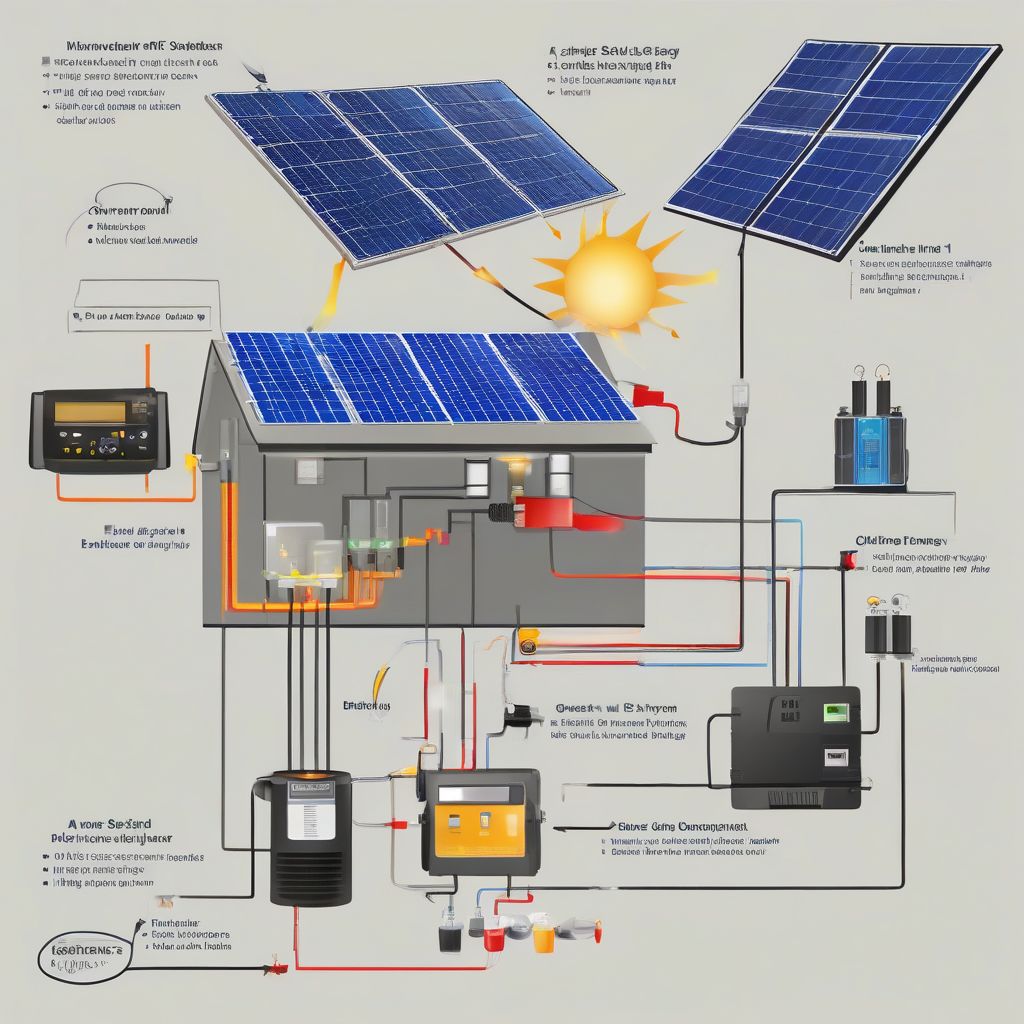Ever dreamt of escaping the power grid and living a life of energy independence? Harnessing the sun’s power through an off-grid solar energy system is becoming increasingly popular, offering a sustainable and cost-effective solution for powering your home, cabin, or even RV. This comprehensive guide will walk you through the steps of setting up your own off-grid solar power system, empowering you to generate clean, reliable energy and reduce your reliance on traditional power sources.
Understanding the Basics of Off-Grid Solar
Before diving into the setup, it’s essential to understand the key components of an off-grid solar energy system. Think of it like preparing a healthy meal – you need the right ingredients to achieve the desired outcome.
Core Components of an Off-Grid System
- Solar Panels: These capture sunlight and convert it into DC electricity. Just like choosing fresh produce for your meal, selecting the right panels is crucial for an efficient system.
- Charge Controller: This regulates the flow of electricity from the solar panels to the batteries, preventing overcharging and damage. It acts as the chef, ensuring everything cooks perfectly.
- Batteries: These store the generated electricity for use when the sun isn’t shining. Think of them as your pantry, storing energy for later use.
- Inverter: This converts the DC electricity stored in the batteries into AC electricity, which is what most household appliances use. It’s like the oven, transforming raw ingredients into a usable meal.
 Off-Grid Solar Energy System Installation
Off-Grid Solar Energy System Installation
Planning Your Off-Grid Solar System
Careful planning is crucial for a successful off-grid solar installation. Just like a well-planned meal prep strategy, it ensures everything runs smoothly and efficiently.
Assessing Your Energy Needs
The first step is to calculate your daily energy consumption. List all the appliances you plan to power and their wattage, then estimate how many hours per day you’ll use each one. This helps determine the size of your solar panel array and battery bank. “Failing to plan is planning to fail,” as Benjamin Franklin wisely said.
Choosing the Right Location
Optimal placement of your solar panels is critical for maximizing sunlight exposure. Ideally, they should face south (in the northern hemisphere) and be free from shading. Just like choosing the sunniest spot in your garden for growing vegetables, finding the right location is key for optimal solar energy generation.
Installing Your Off-Grid Solar System
With a solid plan in place, you can begin the installation process. It’s like following a recipe, carefully executing each step for a successful outcome.
Mounting the Solar Panels
Securely mount the panels on your roof, ground, or another suitable location. Ensure they are angled correctly to maximize sunlight exposure throughout the day.
Connecting the Components
Connect the solar panels to the charge controller, the charge controller to the batteries, and the batteries to the inverter. Double-check all connections to ensure they are secure and properly wired.
Testing the System
Once everything is connected, test the system to ensure it’s functioning correctly. Monitor the battery charge levels and inverter output to verify that everything is working as expected. Like tasting your finished meal, this final check ensures everything is perfect.
Maintaining Your Off-Grid Solar System
Regular maintenance is essential for keeping your system running smoothly and efficiently. Just like keeping your kitchen clean and organized, a little upkeep goes a long way.
Cleaning the Solar Panels
Dust and debris can reduce the efficiency of your solar panels. Clean them regularly with water and a soft brush to ensure they capture maximum sunlight.
Inspecting the Batteries
Check the battery connections and electrolyte levels periodically to ensure they are in good condition. Replace any damaged or worn-out batteries promptly.
Monitoring System Performance
Keep an eye on your system’s performance to identify any potential issues early on. Regular monitoring allows you to optimize your system’s efficiency and ensure it continues to meet your energy needs.
 Maintaining Solar Panels
Maintaining Solar Panels
Conclusion
Setting up an off-grid solar energy system can be a rewarding experience, providing you with clean, reliable, and sustainable power. By following this guide and planning carefully, you can achieve energy independence and reduce your environmental footprint. Remember to prioritize safety, consult with professionals if needed, and enjoy the benefits of harnessing the power of the sun. We encourage you to share your experiences and questions in the comments below and explore other related articles on our website for more information on sustainable living and clean energy solutions.



